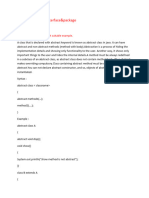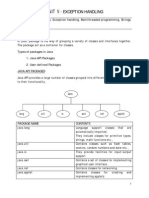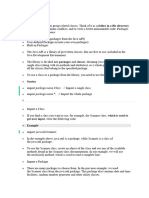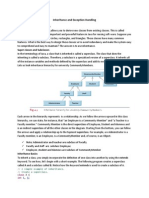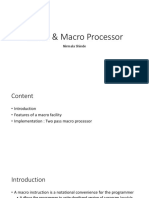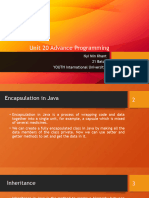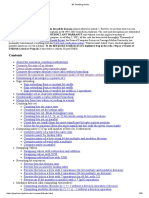0% found this document useful (0 votes)
7 views10 pagesJava Unit-3
The document explains the differences between abstract classes and interfaces in object-oriented programming, highlighting their structures and use cases. It details Java interfaces, their role in achieving multiple inheritance, and provides examples of implementing and extending interfaces. Additionally, it covers Java packages, their types, organization, and exception handling mechanisms, including the hierarchy of exceptions and keywords used for handling them.
Uploaded by
hariprasad garikipatiCopyright
© © All Rights Reserved
We take content rights seriously. If you suspect this is your content, claim it here.
Available Formats
Download as PDF, TXT or read online on Scribd
0% found this document useful (0 votes)
7 views10 pagesJava Unit-3
The document explains the differences between abstract classes and interfaces in object-oriented programming, highlighting their structures and use cases. It details Java interfaces, their role in achieving multiple inheritance, and provides examples of implementing and extending interfaces. Additionally, it covers Java packages, their types, organization, and exception handling mechanisms, including the hierarchy of exceptions and keywords used for handling them.
Uploaded by
hariprasad garikipatiCopyright
© © All Rights Reserved
We take content rights seriously. If you suspect this is your content, claim it here.
Available Formats
Download as PDF, TXT or read online on Scribd
/ 10










